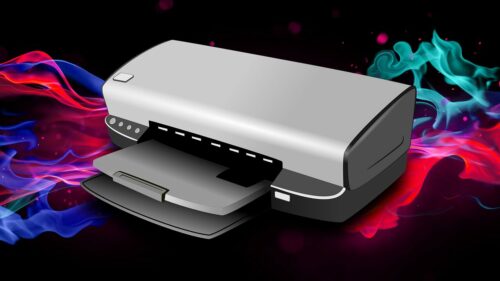
The humble office printer – perhaps not the most exciting element of IT but is part of an industry that is seeing threats and changes, coming thick and fast! Forgive me for a bit of stargazing in this month’s blog article!
The COVID-19 pandemic has had a massive impact in the area of printing, with a lot of employees finding themselves without access to a printer for large parts of that time. This resulted in a shift of behaviour – some of which resulted in a massive increase in sales of very basic printers but also in individuals simply not printing at the same levels before the pandemic.
Now the pandemic is over and many staff are back to more “normal” working patterns, world print volumes have somewhat recovered but I think the general consensus is that they have not totally recovered and the feeling within the industry is that the traditional printing of your meeting agendas, project filings etc has probably moved to digital devices such as laptops, tablets and e-readers or via other means such as screen sharing or projected screens.
Marketing printing for leaflets, label printing etc still shows very good volume use across the world and elements of these areas has actually seen an increase since the pandemic. It is these sorts of shifts I feel we will see more of over the coming years.
It would be crazy of me to suggest that the humble office printer or photocopier is on it’s last legs, however with changes of behaviour following the pandemic, the drive for a greener office and the availability of digital devices, I think it is reasonable to say that the “printing mix” in the office will look very different in the coming decade and beyond.
So how do I see things changing?
More user behaviour changes
The changes in user behaviour we have seen, post pandemic, will change further I believe. Print volumes for your standard office type materials will continue to decrease as we look to become more environmentally friendly. The proliferation of digital devices such as smartphones, tablets, e-readers, screen sharing devices and the move to more virtual meetings will all impact on these global print volumes going forward.
Environment Friendly & Energy Efficient Features
As the world wakes up to the state of the global environment, there has been more focus on environmental friendliness and energy efficiency. The same has affected the printing industry and will affect the future of printing technology too. Cartridge recycling will inevitably have to improve and become a bigger focus of print companies around the world. More efficient inkjet and laserjet printers will also surely come onto the market. For example, toner particles are getting smaller and smaller to create more defined images as well as reduce the power consumption of the printer. Smaller particles melt more quicker, which means that less heat is required. Since less heat is needed, power consumption goes down as well.
Manufacturing through 3D Printing
Hopefully you will already be aware of 3D printing but if not 3D printing is printing that is done three dimensionally. This means that there is no ink, or toner. Everything is done in the air. In the simplest terms, 3D printing is creating products by printing them. A 3D printer does this by using specific materials in place of ink or toner and putting them together like a normal printer, except that it put layers on top of each other till they start thickening up.
3D printing is becoming more and more mainstream and it is not too ambitious to say that as the technology improves and becomes even cheaper that most organisations may have a 3D printer in the near future – especially those in making a product of any sort and even those who don’t!
Printing with light
Printing with light is already set to revolutionize the printing industry.
This type of printing is where beams of UV laser light manipulate liquid resins into droplets at the nanoscale level. This means that detail can be reproduced accurately with no wastage or emissions.
It’s much faster than conventional printing processes, allowing companies to cut back on time spent working with traditional printers. The future of print is brighter due to printing with light and its capacity for recyclability which makes it significantly more environmentally friendly.
Contact Us
Please contact me at matthew.morling@communityactionsuffolk.org.uk or on 01473 345321 and i’d be happy to have a discussion about anything in this area.